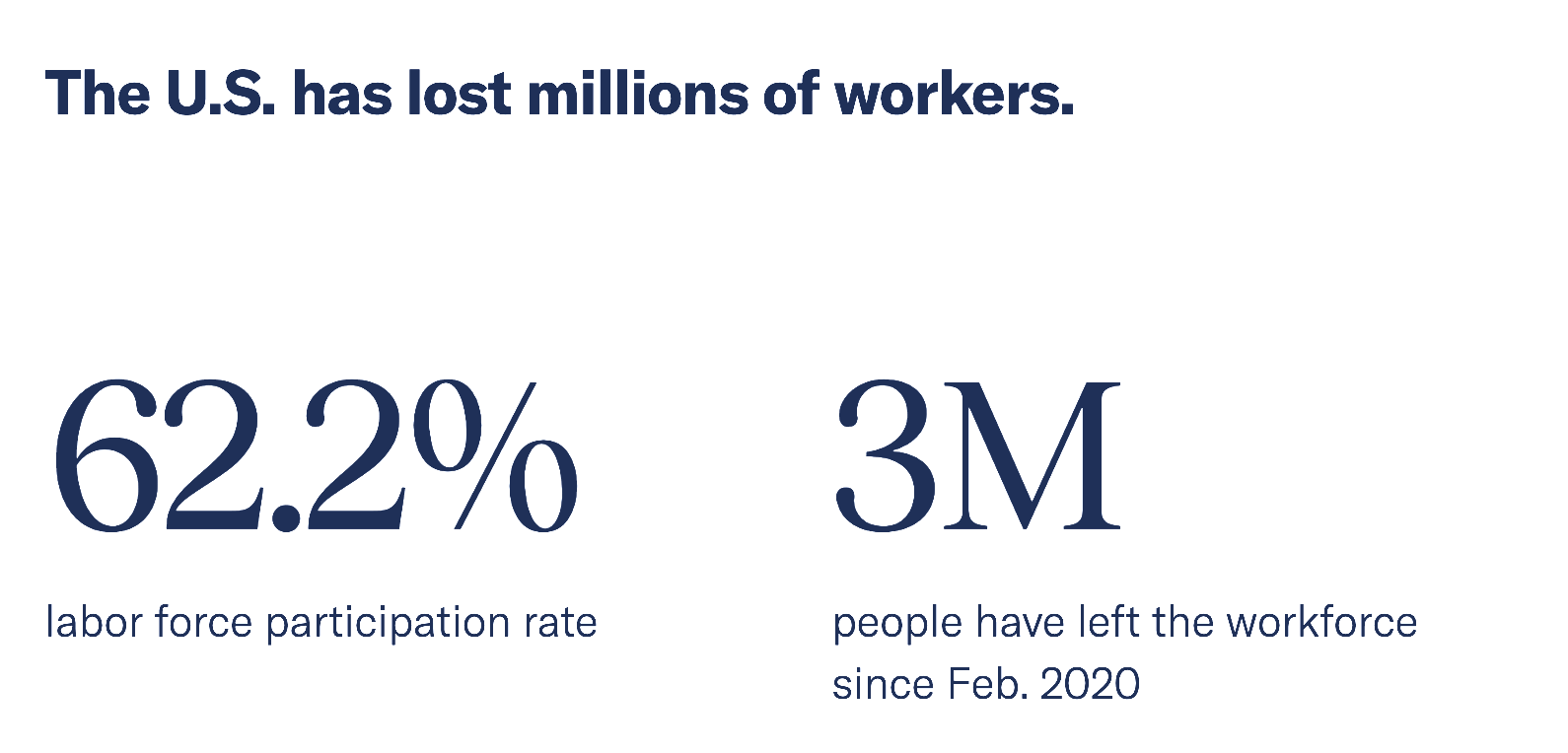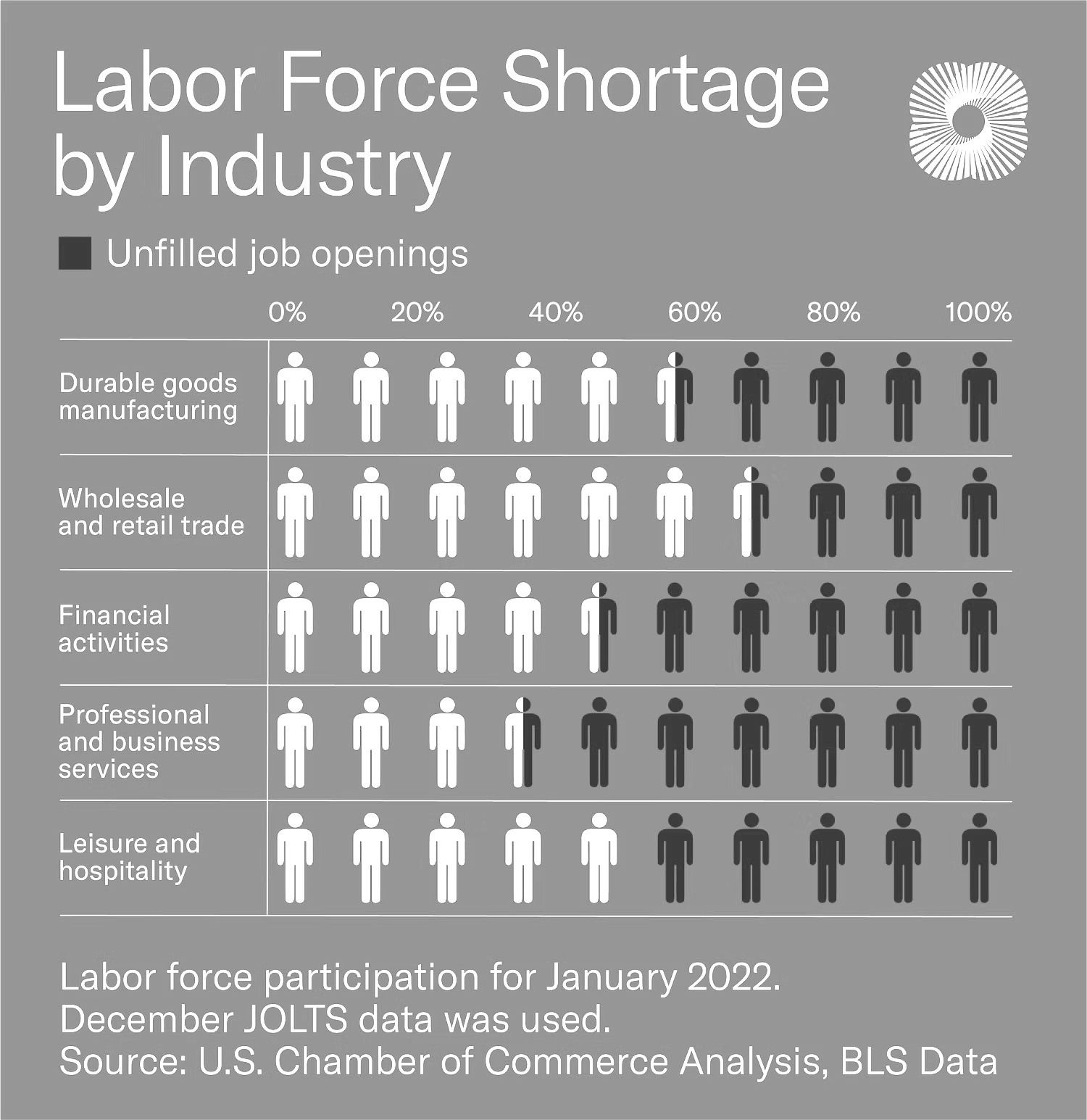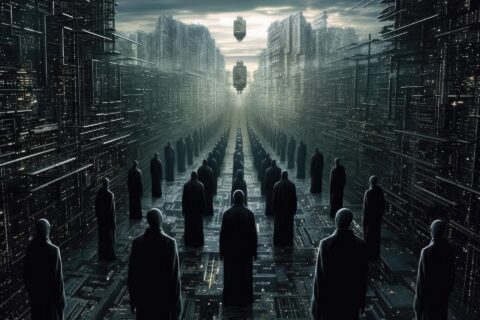New data reveals the nation’s worker shortage crisis is getting worse. According to a recent Bureau of Labor Statistics (BLS) data release, although 428,000 jobs were added, participation in the labor force declined to 62.2% in April and 363,000 left the workforce, further exacerbating the worker shortage crisis.
Job openings reached a record high of 11.5 million in March, and we now have 5.6 million more open jobs than people looking for work.
“The U.S. now has nearly double the number of open jobs than we have available workers. This is unprecedented to have this kind of extreme mismatch between open jobs and people to fill those jobs,” said U.S. Chamber of Commerce Executive Vice President and Chief Policy Officer Neil Bradley.
“We hear from businesses every day that the worker shortage is their top challenge, and it’s impacting the country’s ability to ease supply chain disruptions, get inflation under control and continue our economic recovery. It’s past time for Congress to act on solutions like modernizing our broken immigration system and helping expand affordable childcare options to help fill our 11.5 million open jobs.”
Labor force participation now lags more than one full percentage point below what it was in February 2020. If we had the same participation level today as in 2020, we would have over three million more people looking for work to help fill the gap.
Where have all the workers gone?
The latest jobs report from the Bureau of Labor Statistics indicates thousands of people are entering the workforce. However, labor force participation does not match what it was before the pandemic.

If the percentage of people participating in the labor force was the same as in February 2020, we would have more than three million more people in the workforce today—and this shortage is impacting all industries. If every unemployed worker took an open job in their industry, there would still be open jobs.
“Boosted unemployment benefits, stimulus payments, and child tax credits have padded the finances of some previously employed workers, and they no longer need to work.”
Boosted unemployment benefits, stimulus payments, and child tax credits have padded the finances of some previously employed workers, and they no longer need to work. Plus, early retirements and less immigration have left the nation in a worker deficit.

Is the Great Resignation more like the Great Reshuffle?
The Great Resignation has reverberated through the headlines. However, ‘The Great Reshuffle’ could be a more accurate explanation of the changes taking place in the workforce. The rate at which employees have quit their jobs has grown over the past year. But at the same time, despite a summer plateau, hiring has outpaced quits since November 2020.
What’s next?
What will it take to get workers off the sidelines? Small businesses will have to turn to employee referral perks, employment websites, staffing agencies, and recruiters to handle the long-term load of open roles. It is also critical to build some redundancy into teams so products and clients don’t suffer from concentrated employee turnover spikes.
Employers should also be willing to broaden qualification requirements or do away with resume-reading algorithms that automatically reject prospective employees for a lack of specific experience or a long gap—common during a recession—on their resume.
© YFS Magazine. All Rights Reserved. Copying prohibited. All material is protected by U.S. and international copyright laws. Unauthorized reproduction or distribution of this material is prohibited. Sharing of this material under Attribution-NonCommercial-NoDerivatives 4.0 International terms, listed here, is permitted.














